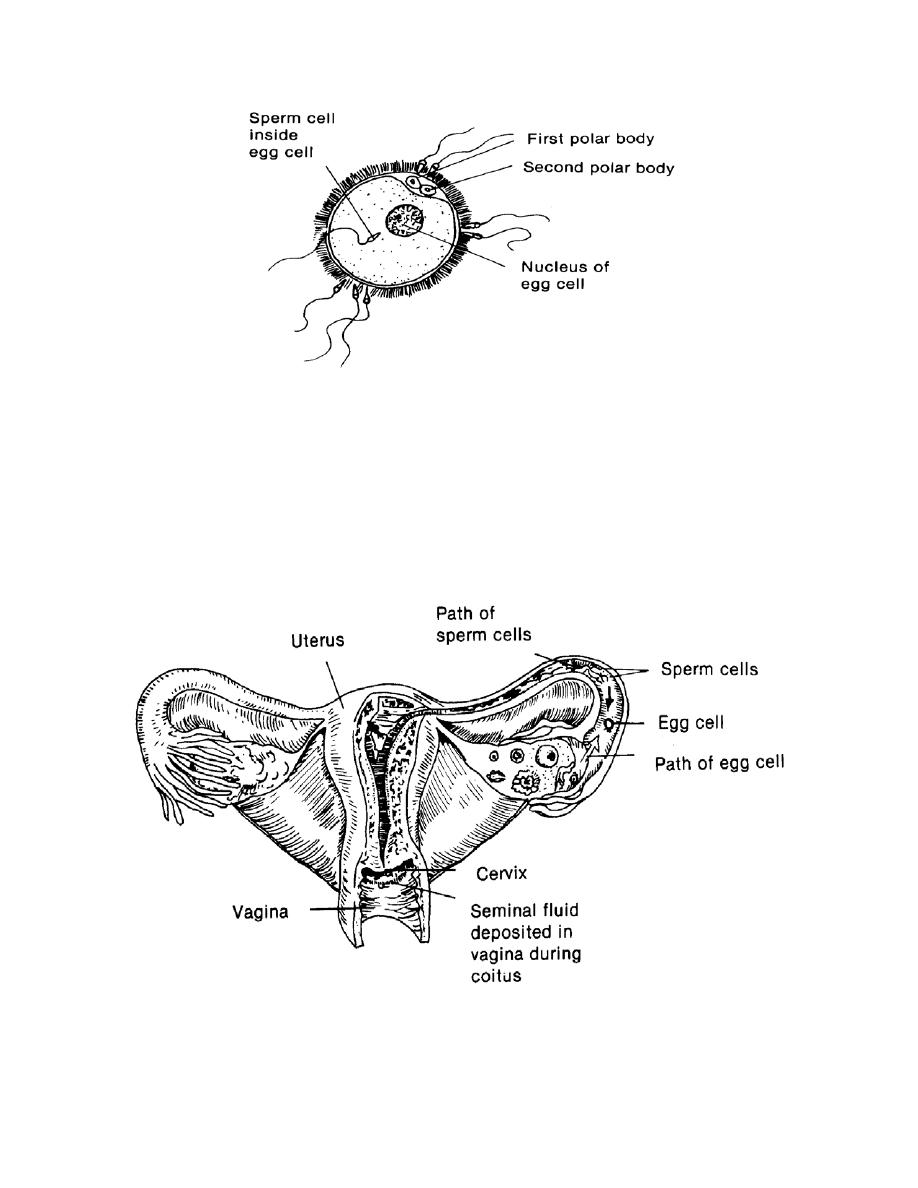
Figure 2-2. Sperm and ovum.
b. During sexual intercourse, 2 to 5 ml of semen, usually containing more than
300 million sperm, is ejaculated into the female's vagina. By flagellar (wiggly)
movement, the sperm make their way through the fluids of the cervical mucous, across
the endometrium, and into the fallopian tube to meet the descending ovum in the
ampulla of the fallopian tube (see figure 2-3). Only one sperm is required for actual
fertilization, but the presence of many increases the chances for one to penetrate. The
union between ovum and sperm occurs in the outer third of the fallopian tube.
Figure 2-3. Travel of sperm to ovum.
2-3
MD0921


 Previous Page
Previous Page
